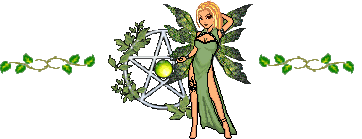
Fairies. How has it taken me this long to cover these amazing magical beings? As a hedgewitch, working with the spirits of the land is just one of the many things I do, and fairies are a pretty important one. I’m not going to go into too much detail about fairies in this post, but if you are interested in learning more about fairies, please refer to W. Y. Evans-Wentz’s book The Fairy-Faith in Celtic Countries. This amazing piece of literature is just one of several texts on which Traditional Witchcraft, including hedgewitchery, is based and is a must read if you wish to work with fairies or even understand the history of witchcraft and folk magic. But I digress! Today we are going to look at how you can invite fairies into your garden to help it grow and add a bit more magic to it.
Grow Specific Flowers
There are several ways you can attract fairies to your garden. They are pretty picky creatures, so making them happy is the key to keeping them in your garden once you have invited them. First, make sure you have the flowers they love. Anything bell-shaped will attract fairies to your garden, as well as hummingbirds, butterflies, and bees. Not sure what to include? Try adding these plants to your garden:
- Lamb’s ear
- Yarrow
- Coneflower
- Rosemary
- Lavender
- Rose
- Lilac
- Morning Glory
- Foxglove
- Thyme
I planted almost all of these in my garden. I’m only missing coneflower (which I will plant next year) and lilac (which I will likely plant next year too). The best part of these particular plants is they are also ones you will often use in magical workings, recipes, and herbal remedies. Foxglove and morning glory are toxic, so don’t use those, but the others are safe!
Set up a Fairy Altar
Have all the flowers but want something more? Try setting up an altar specifically for fairies and make regular offerings. You can include a fairy statue, tea lights, electric fairy lights, and crystals such as quartz, rose quartz, or moonstone on a flat rock or surface in your garden. Once your altar is set up, be sure to leave offerings on the altar or in small walnut shells. Offerings include:
- cream or milk
- beer
- wine
- cider
- honey
- nuts
- chocolate
- flowers (see above)
- shiny objects like coins and jewelry

You must be logged in to post a comment.